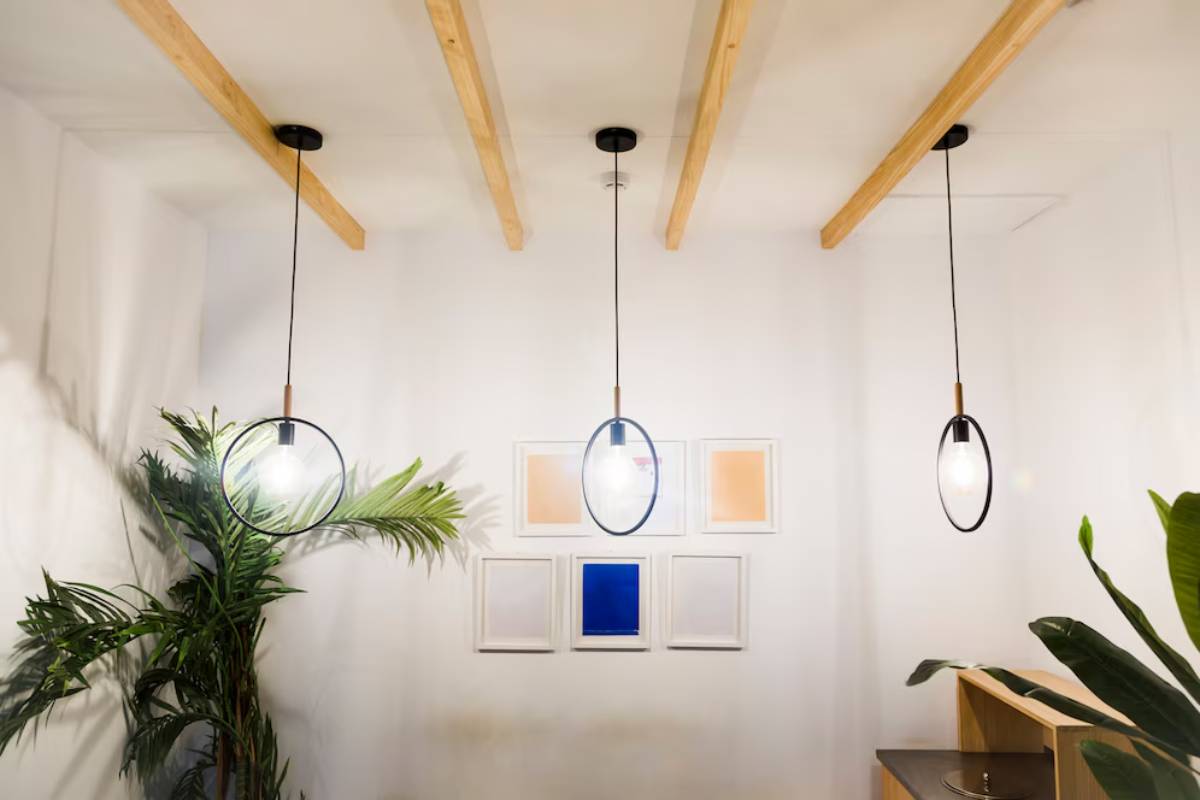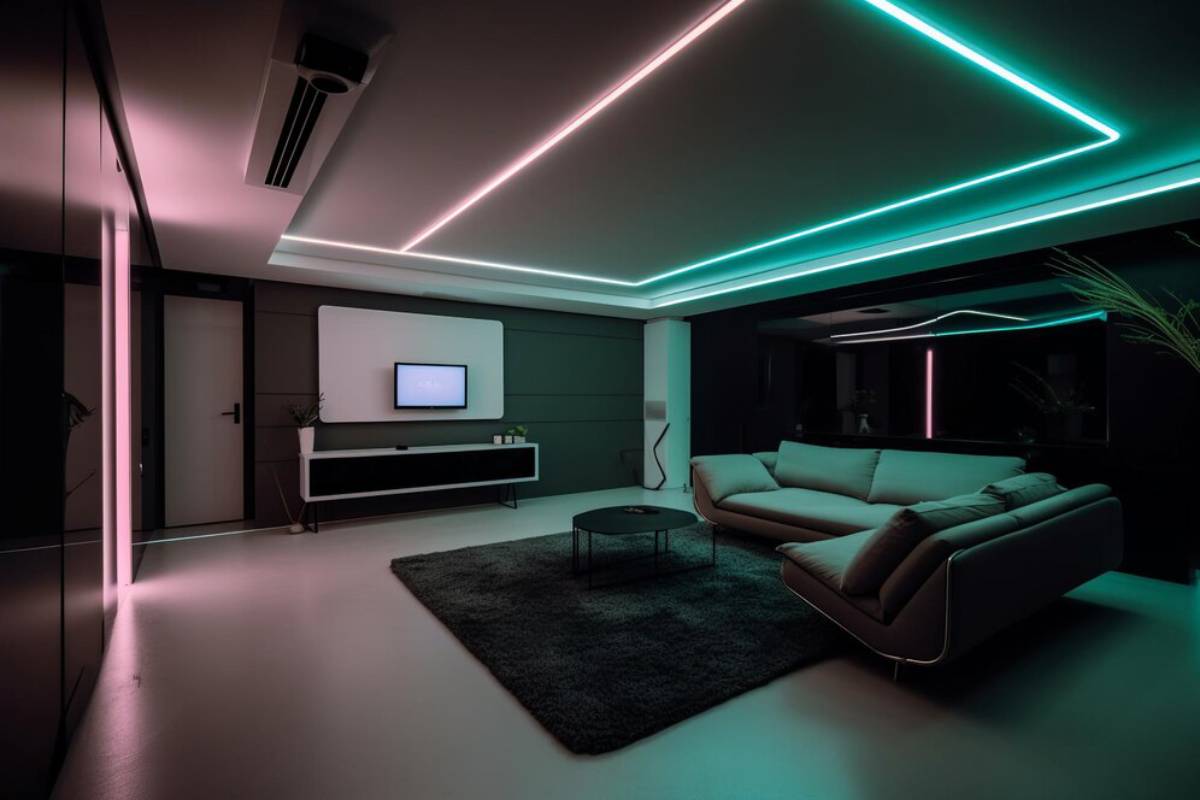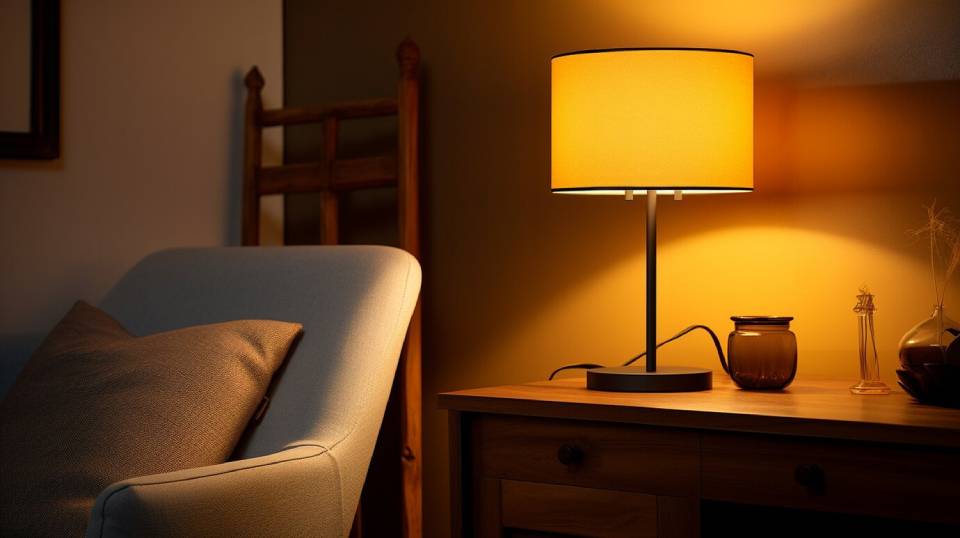
Choosing the Right Bulb Temperature for Windowless Areas
Windowless rooms present a unique design challenge. Without natural sunlight to set the tone, your choice of lighting becomes even more crucial — and it all starts with the right bulb temperature.
In this article, you’ll find a detailed bulb temperature guide to help you master lighting for rooms with no windows. We’ll explore how smart bulb colours can dramatically impact the mood, functionality, and comfort of a space. By the end, you’ll be equipped to turn even the darkest, most enclosed areas into bright and welcoming spaces.
Why Bulb Temperature Matters in Windowless Spaces

Without daylight, artificial lighting takes on a bigger role than ever before.
Key reasons bulb temperature is important:
- Influences mood: Cool lights energise, warm lights relax
- Supports functionality: Different tasks require different light intensities and colours
- Defines atmosphere: Creates a sense of time and natural rhythm
Quick Fact: Studies show that lighting colour temperature impacts circadian rhythms, influencing alertness, sleep patterns, and overall wellbeing.
Understanding Bulb Temperature Basics
Colour temperature is measured in Kelvin (K). Here’s what the scale looks like:
- 2700K–3000K (Warm White): Soft, relaxing, cosy
- 3500K–4000K (Neutral White): Balanced, clear, versatile
- 5000K–6500K (Cool White/Daylight): Crisp, energising, bright
General rule:
- Warm for relaxation areas (bedrooms, lounges)
- Neutral for kitchens, hallways
- Cool for workspaces, gyms, and bathrooms
Choosing the Right Bulb Temperature for Different Windowless Areas
1. Windowless Bedrooms
Best choice: 2700K–3000K warm white
Why:
- Mimics sunset tones to encourage relaxation
- Promotes optimal sleep patterns and restful nights.
Smart Tip: Consider smart bulbs that gradually transition to a warm hue in the evening, creating a calming atmosphere. In the morning, these bulbs can cool slightly to mimic natural sunlight, gently encouraging a more refreshing and pleasant wake-up experience.
2. Windowless Kitchens
Best choice: 3500K neutral white
Why:
- Bright enough for cooking tasks
- Neutral tones prevent food colours from looking strange
3. Windowless Bathrooms
Best choice: 4000K cool white
Why:
- Clear, bright lighting is essential for grooming
- Emulates natural daylight, creating a vibrant and invigorating atmosphere.
Explore additional concepts for intelligent configurations by visiting: How to Brighten Windowless Spaces with Smart Lighting
4. Windowless Offices or Study Areas

Best choice: 5000K daylight white
Why:
- Boosts concentration and alertness
- Alleviates eye strain while working on the computer.
Smart Move: Create intelligent lighting scenes that modify brightness according to the time of day. Use brighter settings in the morning to enhance alertness, and shift to softer lighting in the evening to promote relaxation and comfort for your eyes.
How Smart Bulbs Elevate Windowless Lighting
Modern smart lighting lets you fine-tune colour and brightness in ways traditional bulbs can’t.
Top features to look for:
- Tunable white range: Easily shift between warm and cool tones
- Scheduling: Mimic natural day/night cycles
- Scenes and presets: Instant mood changes for different activities
- Voice and app control: Adjust without getting up
Popular options:
- Philips Hue White Ambience
- LIFX Tunable White
- Nanoleaf Essentials
Practical Lighting Tips for Windowless Rooms

Get it right by:
- Layering lights: Combine overhead, wall, and accent lights
- Balancing brightness: Strive for a harmonious distribution of light throughout the space. Steer clear of harsh contrasts and ensure that no areas remain overly dark or dim.
- Using dimmers: Implement adjustable lighting solutions to modify brightness levels according to the time of day and specific activities being performed. This allows for a more comfortable and functional environment.
- Prioritising CRI (Colour Rendering Index): Select bulbs with a Color Rendering Index (CRI) greater than 80 to ensure accurate color representation in your space. Incorporating reflective surfaces, such as mirrors and glossy finishes, enhances the distribution of light, creating a more evenly lit environment.
Real-Life Success Stories: Smart Bulbs in Windowless Areas
A Basement Gym in Birmingham
Daniel installed 5000K daylight smart bulbs on motion sensors.
“The space feels energising, not like I’m working out in a dungeon,” he jokes.
A Tiny Office in London
Priya used Philips Hue bulbs to shift from bright daylight white during work hours to warm white as the evening approached.
“It changed my entire relationship with my workspace,” she says.
Common Mistakes to Avoid with Bulb Temperature
Don’t fall into these traps:
- Overdoing cool white in living spaces: Can feel clinical and harsh
- Ignoring transitions: Lighting should subtly shift throughout the day
- Opting for non-dimmable bulbs is essential for flexibility in areas without windows, ensuring adequate brightness throughout the space.
- Relying on a single light source can create harsh lighting; incorporating layered lighting adds depth and a more inviting atmosphere.
Brighten the Mood: Master Bulb Temperature for Every Space
Choosing the right bulb temperature is the key to unlocking the potential of any windowless room. With the right lighting for no windows, you can turn dark, dull spaces into vibrant, productive, and cosy sanctuaries.
Whether you’re setting up a home office, a relaxing bedroom, or a bright kitchen nook, understanding smart bulb colours and temperature control ensures your environment supports your mood, activities, and wellbeing.
Ready to light up your world — even without windows? Start by upgrading one room with tunable smart lighting and experience the difference. Share your smart lighting tips and experiments in the comments below, and subscribe for more clever living ideas!


